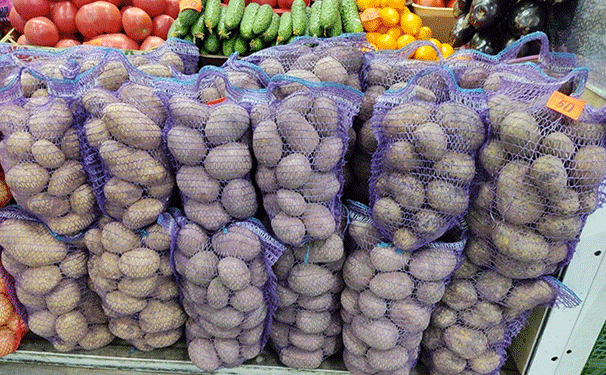In response to declining potato harvests and skyrocketing prices, Russia’s Ministry of Agriculture and Ministry of Economic Development are exploring measures to stabilize the market, including increased imports from allied nations. This strategic move comes after Vice Prime Minister Dmitry Patrushev emphasized the urgency of ensuring potato availability in 2024. Let’s break down the factors leading to the current situation and examine the proposed solutions.
A Sharp Decline in Domestic Potato Production
This year, Russian potato farmers faced significant challenges, resulting in a reduced harvest of 7,500 tons, down by 15% compared to 2023. Two primary reasons contributed to this decline: a decrease in the area of land allocated for potato cultivation and unfavorable weather conditions. These issues have strained the market, leading to a noticeable supply shortage.
According to the Potato Union, the reduced production is exacerbating price inflation. Wholesale prices for potatoes have nearly doubled compared to last year. The price spike is partially attributed to the surplus in 2023, when a record-high yield led farmers to sell below production costs. The market’s sudden shift from surplus to shortage has left consumers and retailers bracing for a harsh winter.
Market Dynamics and Unregistered Stock
Despite concerning official statistics, industry insiders suggest that the situation may not be as severe. A significant factor is the existence of “gray” or unregistered stocks of potatoes that many farmers might be holding onto. These hidden reserves could provide a cushion for the market, as producers may release them strategically to capitalize on high prices later in the season.
However, this informal economy makes it difficult to forecast market behavior accurately. While hidden stockpiles may temporarily alleviate shortages, relying on them is unpredictable and risky for long-term stability. Agricultural engineers and policy planners need more accurate data to make informed decisions and avoid future crises.
Importing Potatoes: A Viable Solution?
To mitigate the shortage, Russian officials are considering potato imports from countries such as Belarus, Serbia, Uzbekistan, Azerbaijan, Armenia, Egypt, and China. These nations have strong agricultural sectors and established trade relationships with Russia. The cost of imported potatoes is expected to be around 90 rubles per kilogram, which could help stabilize consumer prices, though it may still be higher than domestic rates from previous years.
Agronomists and economists are debating the implications of relying on imports. While importing potatoes could provide immediate relief, it raises concerns about food security, dependency on external sources, and the potential impact on domestic farmers. Agricultural engineers and scientists also point out that long-term solutions should include investments in better irrigation systems, climate-resilient crop varieties, and improved storage facilities to mitigate the effects of unfavorable weather patterns.
Russia’s potato market in 2024 is facing a complex set of challenges driven by reduced domestic production, rising prices, and an unpredictable market environment. While increased imports from friendly nations offer a short-term fix, sustainable agricultural practices and accurate data collection will be crucial to stabilizing the potato sector. Farmers, agronomists, and agricultural policymakers must work collaboratively to navigate these challenges and ensure food security in the long term.








